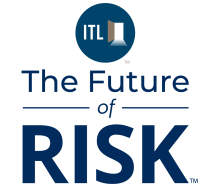Over the past decade, carriers have modernized their core systems, stitched together integration layers, and deployed business process management (BPM) tools. These efforts brought efficiency and scalability, but they weren't built to support what may be the most significant shift in enterprise technology since the microprocessor: AI.
As AI moves from pilot to enterprise-wide production, regulators like the NAIC are focusing on governance and explainability, and many insurers are discovering that their current architecture simply wasn't designed for this new world.
Insurers don't need to throw away what they've built. But they do need a new layer of architecture, one that enables orchestration of automation, AI, and digital servicing independent of the core. This is driving a shift toward coreless modernization.
What Is Coreless Modernization?
To be clear, coreless doesn't mean going without a core system. It means liberating the enterprise from the limitations of the core. This virtualized layer acts like a semantic graph, allowing systems and applications to operate on real-time data across the enterprise without duplication or disruption.
While traditional legacy transformation often relies on expensive projects involving replacing and retiring core systems, coreless takes a different approach. It uses an event-driven orchestration layer, data fabric, and modular AI services to externalize business logic, workflows, and decision-making to a more flexible, intelligent layer while leaving the core system intact.
Core systems remain the system of record, but orchestration of servicing, underwriting, distribution, and engagement are able to be moved to the abstracted layer that's decoupled from the legacy constraints that typically slow innovation.
In effect, this creates a hollowed-out legacy environment, one where modern capabilities operate in sync with the core system, extending its utility without overloading it or requiring that it be replaced.
Why Now?
Three fundamental shifts are making coreless possible:
- Data Fabric Maturity: Insurers now have the tools to build a unified data layer across systems, without duplicating or displacing source systems. This makes it possible to expose business state and automate real-time workflows without overwhelming the core.
- AI-Driven Decision-Making: With agentic AI, intelligent automation can now handle more than just simple tasks. Complex underwriting, fraud detection, and case routing can run outside the core with full lineage, audibility and traceability.
- Composable Architecture: Agentic orchestration allows new journeys and products to be assembled in weeks, not years, without being bottlenecked by monolithic legacy dependencies.
These shifts aren't abstract trends. They are direct responses to mounting pressure across the insurance enterprise. Distribution leaders want faster partner onboarding. Product teams need to launch offerings in weeks, not quarters. Compliance officers and regulators demand auditability. CIOs are expected to scale AI safely without triggering full system rework. Traditional architectures can't keep up. Coreless gives insurers a way to break through without breaking what already works.
What Makes Coreless Different?
The key distinction is architectural: Coreless reinvention introduces a unified substrate for orchestrating AI, automation, and digital workflows without replatforming. Where BPM tools and application programming interface (API) middleware attempt to route tasks across siloed systems, coreless provides an explainable orchestration substrate that can:
- Ingest real-time business events to trigger AI and automation flows
- Log every decision for audit and NAIC compliance
- Scale horizontally without relying on BPM or synchronous APIs
A Blueprint for Reinvention Without Disruption
Every decade or so, enterprise technology brings a defining architectural shift. Mainframes gave way to client-server architectures. Legacy policy administration systems (PAS) evolved into cloud-based cores. This next shift is being shaped by AI.
Some insurers are already applying coreless principles in practice. One insurance carrier began orchestrating new workflows around its existing core systems, rather than within them. This shift allowed the company to significantly reduce policy issuance times and achieve sub-400 millisecond response times, all without rewriting foundational infrastructure or disrupting their core.
Composable. Co-existent. Designed for Flexibility.
The concept of coreless is built on the principle of separation of duties in every module, from decision-making engine to data fabric and AI orchestration. These can operate independently or together, depending on your needs. This means insurers can retain existing investments, whether that's a PAS, customer relationship management (CRM), or claims system, and still adopt AI capabilities to modernize intelligently.
With agentic AI, embedded experiences, and real-time orchestration on the rise, coreless modernization is becoming the new path forward. It's a pragmatic response to the realities of building, scaling, and governing AI-powered insurance operations in today's landscape. For insurers navigating legacy complexity while pushing toward digital agility, Coreless offers a viable alternative for modernization, one that complements what exists, while enabling what's next.
If you are trying to scale AI inside a legacy-bound stack, you're already behind. Coreless isn't the future. It's today. Start embracing it now.






